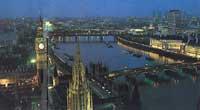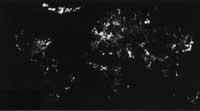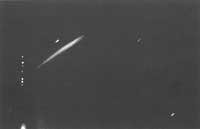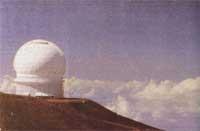Stars and night lighting
1993/10/01 Otaolaurretxi, Jon Iturria: Elhuyar aldizkaria
In many parts of the world there is a need to relocate the ancient astronomical observatories, which have been unused by the night light of the cities. In the United States, for example, famous astronomer Edwin Hubble was able to measure the distance from California's Wilson Mount to the Andromeda galaxy using his telescopes. However, at present they cannot use the light of Los Angeles. So much has happened in Paris. A century ago the Pleiades nebulae were photographed from the Paris observatory, but now they are not available because the brightness of the city prevents them.

Our modern civilization has made us forget what night is. Our life is no longer limited or conditioned by sunlight. Works that previously could not be done thanks to artificial light can be done without any difficulty, even though the Sun had been set long ago. We created an artificial day after sunset, when the children of the cities do not even know what the black night is. This would be an absolute breakthrough if we did not take the opportunity to prove the greatness of the universe on the clear night. And it is that we no longer have at hand any night show that surprised our ancestors.
As the population increases, cities have been generating over the years an environment of increasing light. The lamps placed to illuminate the streets illuminate the sky, to the point that most of the population cannot see either the Milky Way or many stars.
These walls of light make the work of professional astronomers very difficult. The farthest and lightest objects are only visible with large telescopes, but these devices must be placed as far as possible from the places of “light pollution” so that they can act.
The phenomenon has been called “light pollution”, since this light is not used for the comfort or safety of citizens. It is a lost light that benefits no one. In addition, pollution is very expensive. When we are approaching a city by car and see the light of the streets or avenues a few kilometers before, it can be thought that this light should be used to illuminate the streets and avenues, and that it should not be wasted to reach points located miles from there.

In the theater, for example, through the spotlights the stage is lit, but nobody gets into the head that must stick with light to the spectators. This is the case of mercury vapor lamps. More than the street illuminate the sky and the same can be said of the luminous announcements placed on the facades and squares of these buildings. Some lamps are also very bad in terms of performance. Incandescent lamps, for example, produce a lot of heat and low light if consumption is taken into account. Mercury vapor lamps emit mostly invisible radiation. Sodium vapor lamps have a much higher performance, although color separation with this light is not so easy.
In some U.S. cities all lamps have begun to change. They are usually cities close to astronomical observatories like San Diego, a few kilometers from Mount Palomar, California, or the Tucson of Arizona, near the Kitt Peak observatory. 18,000 Tucson lamps with 330,000 inhabitants have been modified and have achieved an annual consumption reduction of 1.2 million dollars.
Astronomers are not against the illumination of the night. Because they have the same needs as other citizens who work at night. However, they want to keep the black sky, as it can be achieved by controlling the quality of public lighting and facilities. In addition, astronomers would not have to go like now to work in the desert mountains.

Gai honi buruzko eduki gehiago
Elhuyarrek garatutako teknologia






